Restoring Henry
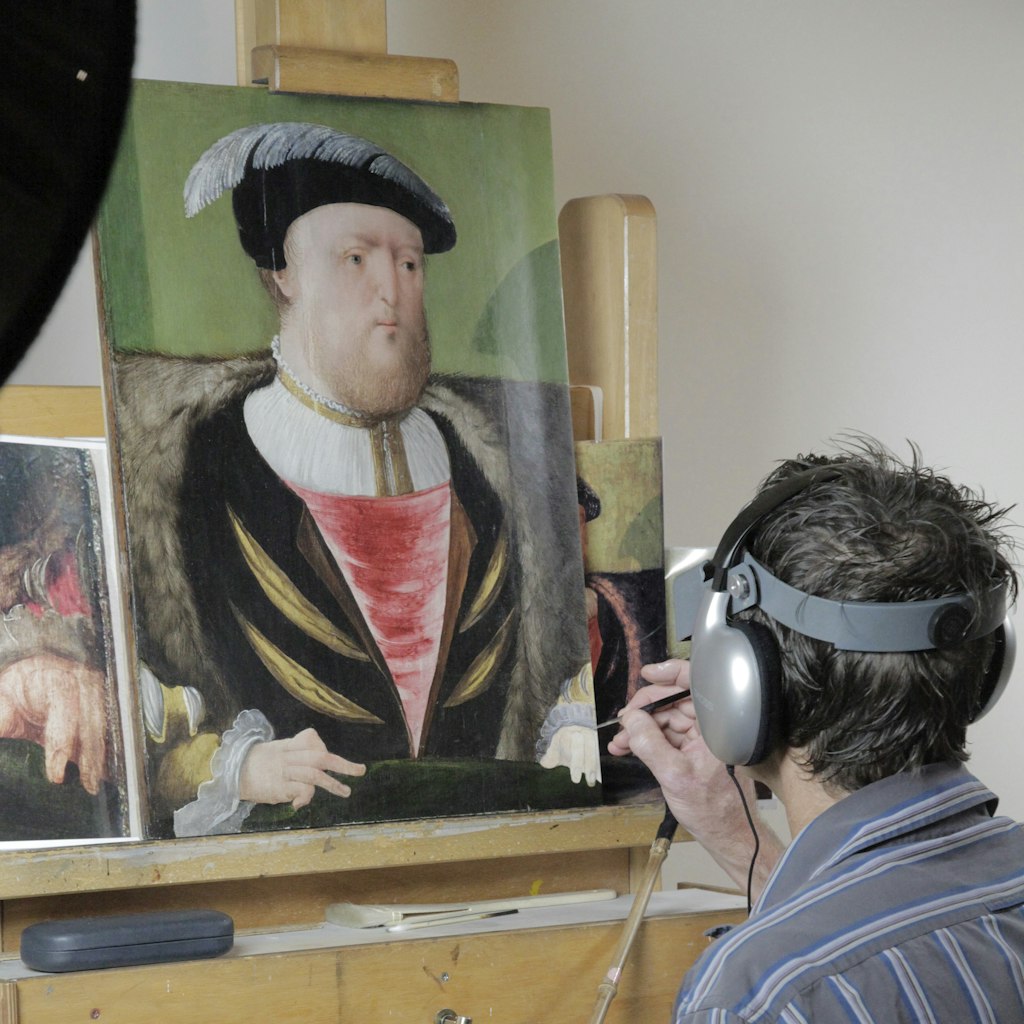
Paintings conservator Simon Ives restoring the Henry VIII portrait from the Art Gallery of New South Wales collection
More than most other genres of Western painting, portraits from Tudor England have quite commonly been altered after their creation, sometimes with lavish layers of pigments added which hide or disfigure parts of the original painting.
Even before our recent investigations into the mysteries of the Henry VIII portrait in the Art Gallery of NSW collection, we knew that some alterations had been made to this artwork between 1945 and 1946, thanks to several contemporary photos of the panel.
The painting had entered our collection when it was purchased by Christopher Morris on behalf of the Gallery’s trustees at Sotheby’s London on 22 February 1961 (as Jan van Scorel). We know that, previously, the portrait had been sold at Christie’s London on 16 February 1945 (as Holbein), from the collection of the 5th Earl of Gosford, to a certain ‘Vokins’, before reappearing at Colnaghi’s in 1948. The painting was illustrated on an advertisement for Paul Larsen art dealer in Art News Annual 1945–46.
From the accompanying images we know that, in 1945, a section at the right edge of the panel was missing but, by 1946, an additional 3.6cm wide strip had been attached. However, we now know from similar portraits of Henry that our painting would originally have been a little wider and included the king’s left hand on the missing piece as well as a shadow on the green background (a remnant of which was still faintly visible on the surviving part of the original panel).
In the 1945 image, all the fingers of the surviving hand appear straight. By the next year, the index finger had been returned to its original bent position (but not the little finger, which originally had been crooked too).
In 1945, original ruffs on the right sleeve of the Henry’s tunic were visible, but these had been overpainted by 1946.
Also no longer evident by 1946 was an inscription across his shirt which, while clearly not original, was an early addition, perhaps from the 17th century. It read:
Henery of hauty mind and sturdy (mien)
In fury reined or often changed his [queen]
disoned the pope and kept us papists still
burned both sides alike dare contest his will
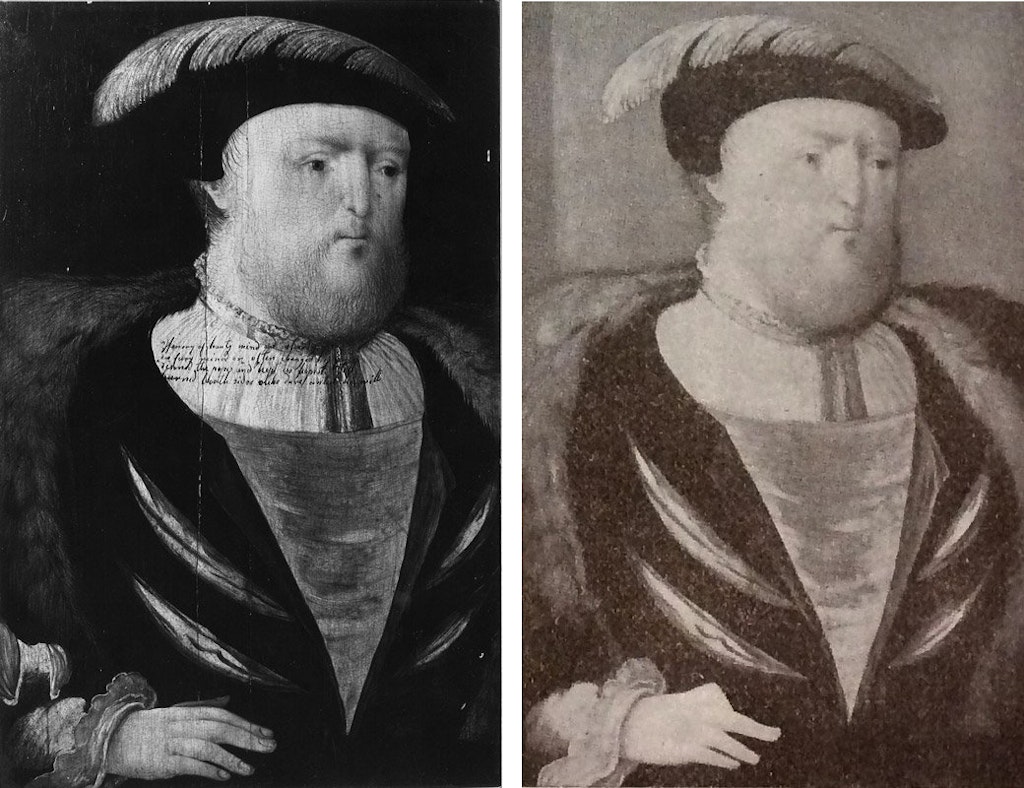
Images of the Gallery's Henry VIII portrait from 1945 (left) and 1946 (right)
The object of the restoration treatment most recently undertaken by the Gallery was to remove the non-original material that disfigured the original work, and then to reconstruct the damaged areas allowing the remaining original artwork to be read as a coherent whole.
Armed with the results from our extensive research project, Gallery paintings conservator Simon Ives began the painstaking process.
Dirt, varnish and overpaint were removed using a range of aqueous cleaning agents and solvents.
With the dark, discoloured varnish layer gone, the fresh original paint colours were revealed. Non-original overpaint was liquified in solvents that did not affect the original paint then swabbed away. Brown overpaint was removed from Henry’s right sleeve to reveal the original gilding and ruff concealed beneath. A layer of black overpaint was cleaned from the cushion on which Henry rests his hands – revealing it to be originally green – and the originally bent little finger on his right hand could also now be seen again. At the upper right of the painting, the original verdigris remains of Henry’s cast shadow, as well as the non-original replacement strip of panel, were revealed once the chrome green overpaint was removed.
Paint losses and cracks in the wooden support were filled with chalk and gelatine to establish a more continuous surface. The lost section of the panel at the right edge was extended by adhering an additional width of 3.1cm of quarter-sawn oak, to re-establish the original dimensions calculated from the proportions of the other, complete portraits. Areas of loss were in-painted, using dry pigments in a reversible medium, to reintegrate the remaining original paintwork. The missing area of the composition at the right edge was reconstructed based on the other surviving works to enable the original part of the composition to be read coherently in its intended context. The carefully controlled fall of light that illuminates the composition with a logical consistency became apparent once again with the clean, retouch and reconstruction of the damaged areas and lost edge.
You can see the restoration as it progressed in our slideshow.
Henry VIII restoration
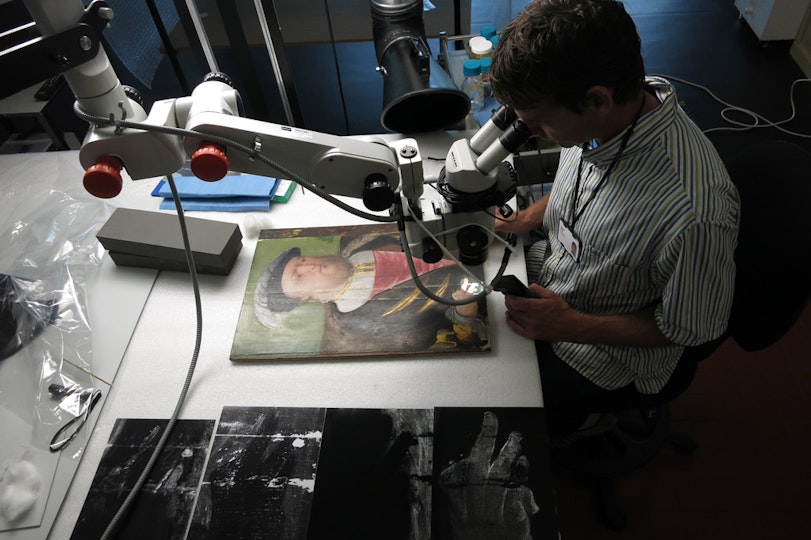
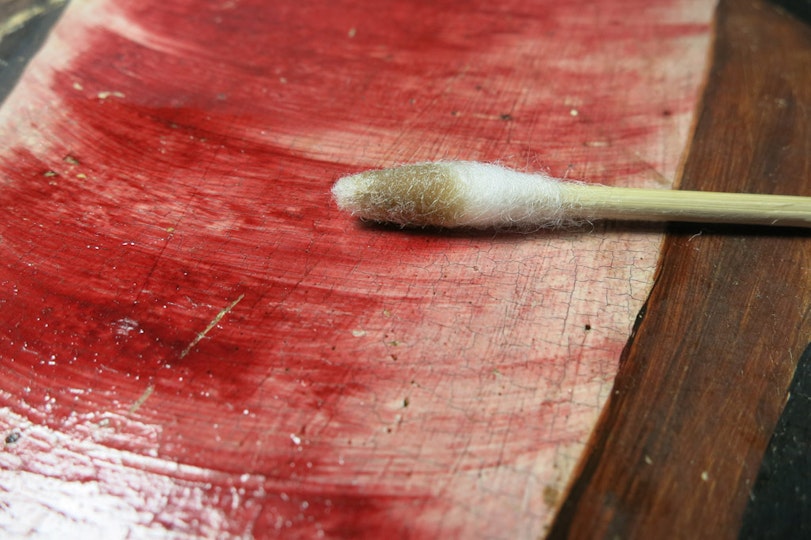
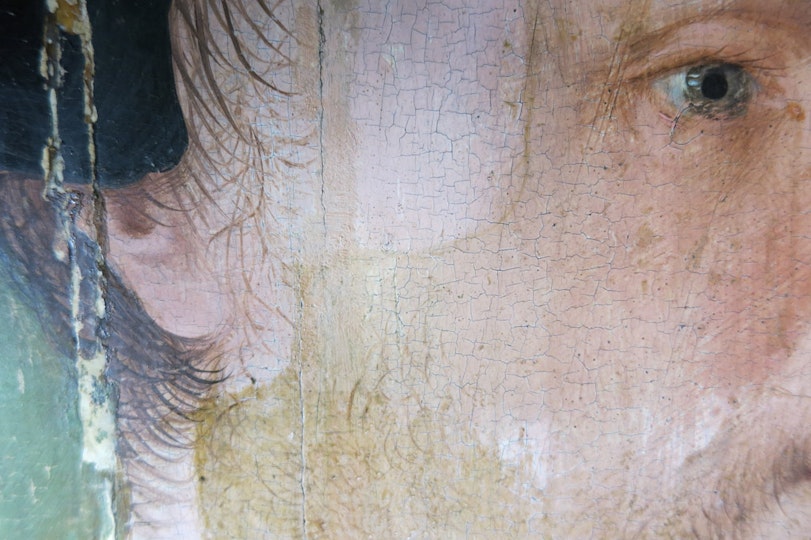
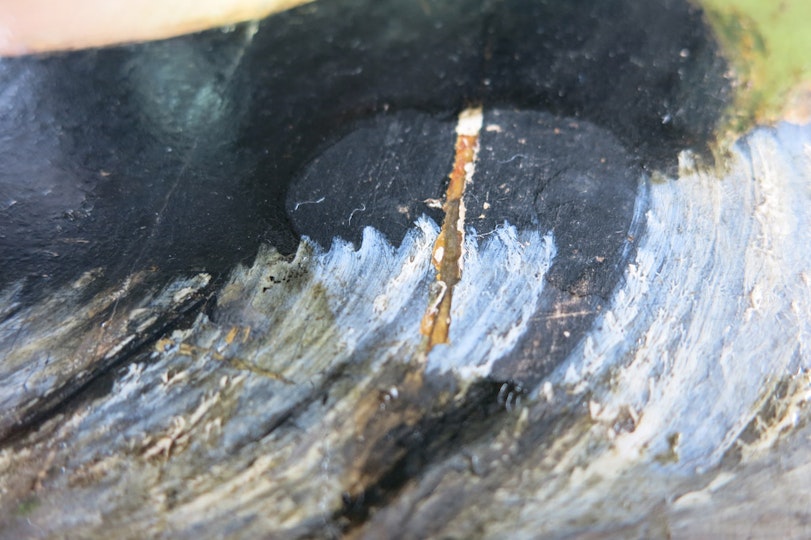
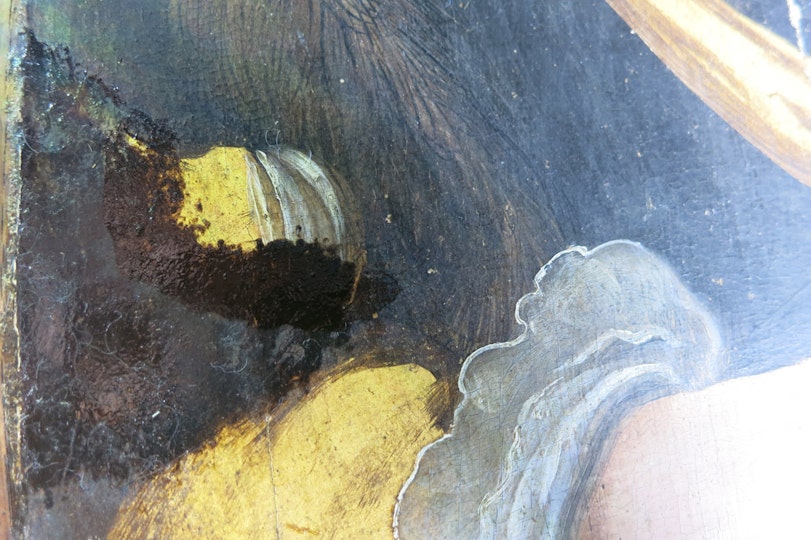
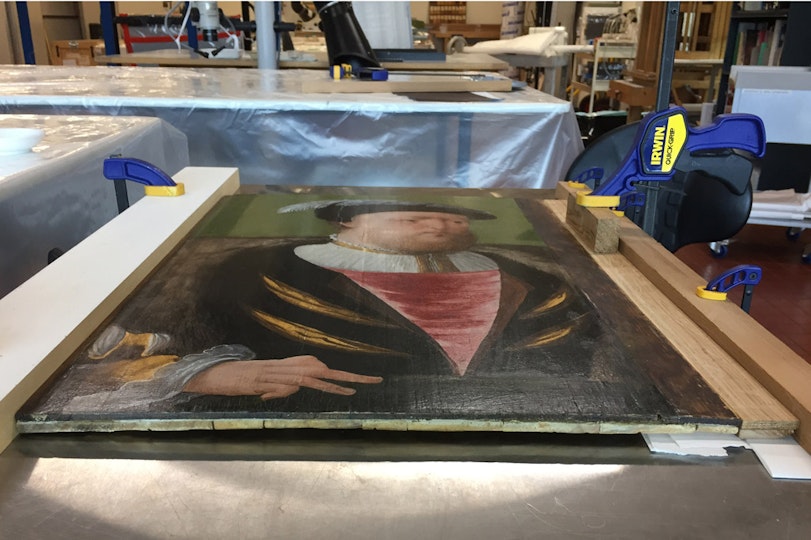
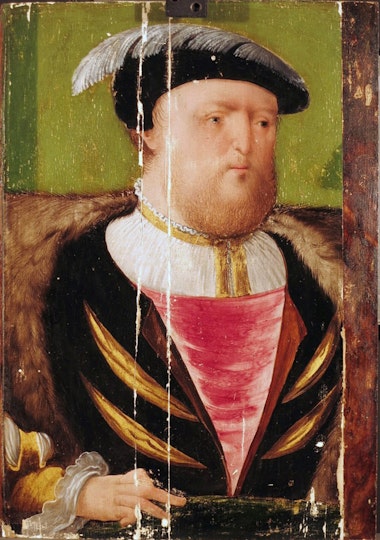
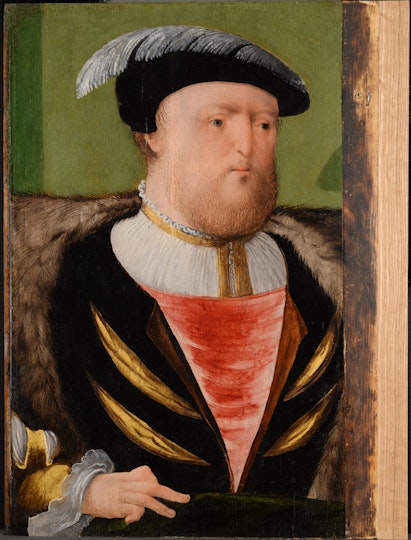
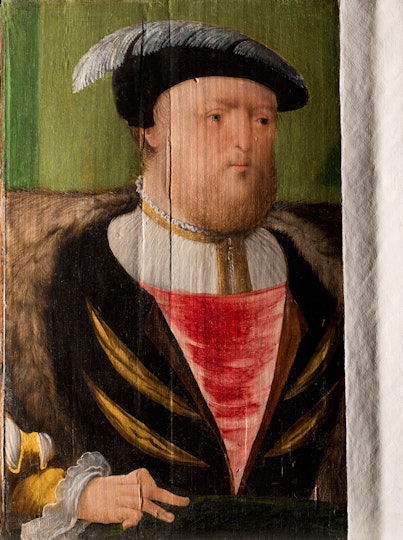
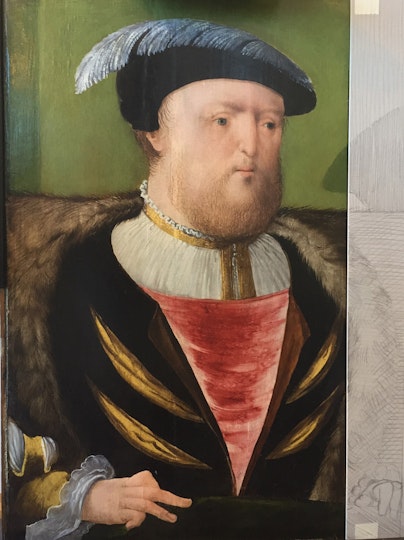
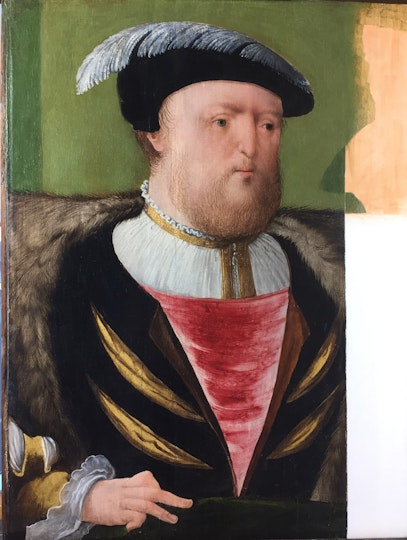
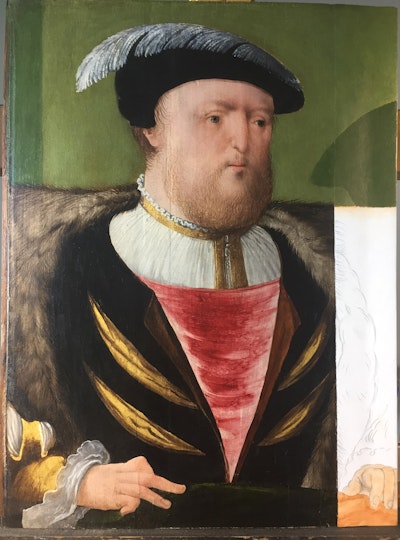
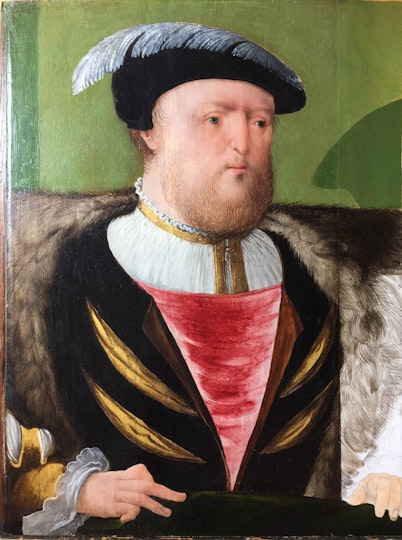
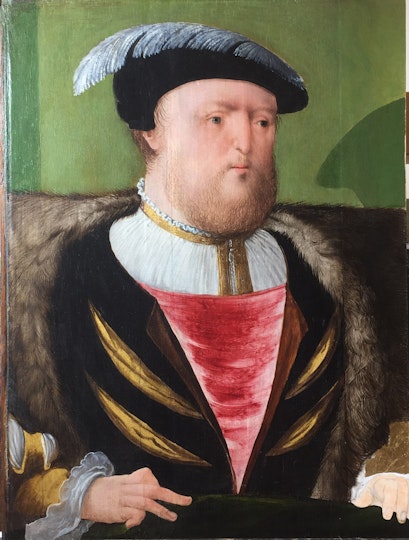
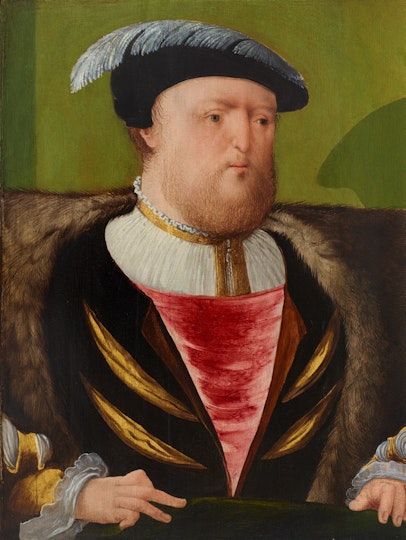
The restoration of King Henry VIII could not have happened without support from the Conservation Benefactors most notably, Dorothy R Spry (in memory of), Hamish Parker, Leonard Groat and Kenneth Reed AM.
The restored portrait is on display from 12 May to 9 September 2018 in Henry VR.
In our next Henry VIII post, we’ll look at the process of creating a suitable frame for our panel.